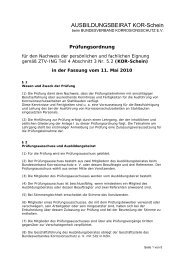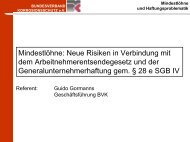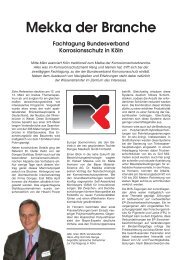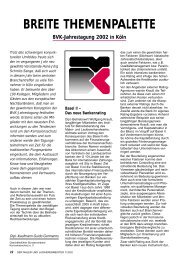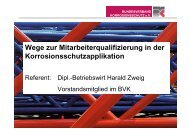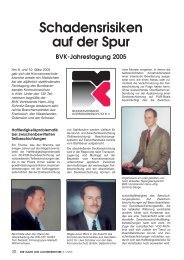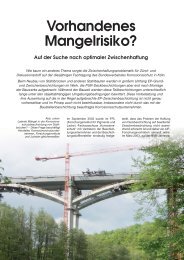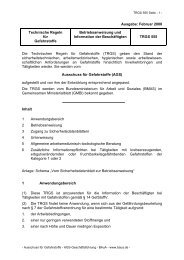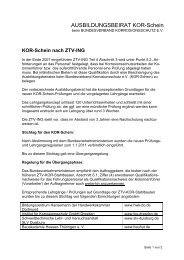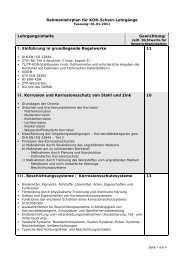Guideline of trade associations - VdL Verband der Lackindustrie e.V.
Guideline of trade associations - VdL Verband der Lackindustrie e.V.
Guideline of trade associations - VdL Verband der Lackindustrie e.V.
You also want an ePaper? Increase the reach of your titles
YUMPU automatically turns print PDFs into web optimized ePapers that Google loves.
5 Composition and properties <strong>of</strong> duplex systems<br />
5.1 General<br />
7<br />
The aim <strong>of</strong> duplex systems – corrosion protection <strong>of</strong> high durability – will be achieved if both<br />
parties <strong>of</strong> the system fulfil their function and are optimally adapted to each other.<br />
For this, the selection <strong>of</strong> suitable coating materials for the single or multi-coat paint coatings<br />
is particularly important. These materials shall have certain application-related properties<br />
such as UV resistance, resistance to chemicals, diffusion tightness etc.. Precondition for a<br />
high durability is, however, an unobjectionable and long-lasting adhesion on the hot-dipgalvanized<br />
zinc coating. As a matter <strong>of</strong> principle, only those systems should be used which<br />
have been proved in suitability tests as being suitable for use on hot-dip-galvanized zinc<br />
coatings (see clause 8).<br />
5.2 Hot-dip-galvanizing<br />
Hot-dip galvanizing is a melt dipping method in which building components, workpieces or<br />
sheets <strong>of</strong> steel are provided with a zinc or zinc alloy coating by dipping into a liquid zinc melt.<br />
The requirements and the test methods for the zinc coating are specified in EN ISO 1461.<br />
5.2.1 Thickness <strong>of</strong> zinc coatings<br />
In accordance with EN ISO 1461 the minimum thickness <strong>of</strong> zinc coatings is between 45 µm<br />
and 85 µm. In practice the zinc coatings are, however, distinctly thicker, depending on<br />
composition <strong>of</strong> the steel, material thickness, time period <strong>of</strong> dipping and other parameters.<br />
Minimum thicknesses are given in table 1. In practice higher coating thicknesses may be<br />
agreed.<br />
Table 1: Minimum thickness <strong>of</strong> zinc coatings (EN ISO 1461)<br />
Material thickness<br />
mm<br />
5.2.2 Properties <strong>of</strong> zinc coatings<br />
Coating thickness<br />
µm<br />
< 1,5 ≥ 45<br />
≥1,5 to < 3 ≥ 55<br />
≥3 to < 6 ≥ 70<br />
≥ 6 ≥ 85<br />
Depending on the chemical composition <strong>of</strong> the steel to be zinc-coated and the mass <strong>of</strong> the<br />
steel part the zinc coating is formed differently (Figure 1). Zinc coatings may consist <strong>of</strong> a<br />
layer <strong>of</strong> an iron zinc alloy and a so-called pure-zinc layer above it (silvery appearance), but<br />
also completely <strong>of</strong> iron zinc alloy layers. The latter show a grey appearance and are slightly<br />
more rough than silvery zinc coatings. There are no differences with regard to corrosion<br />
protection between these possible variations in the case <strong>of</strong> weathering by the atmosphere.<br />
Both are suitable as substrate for a subsequent paint coating.



